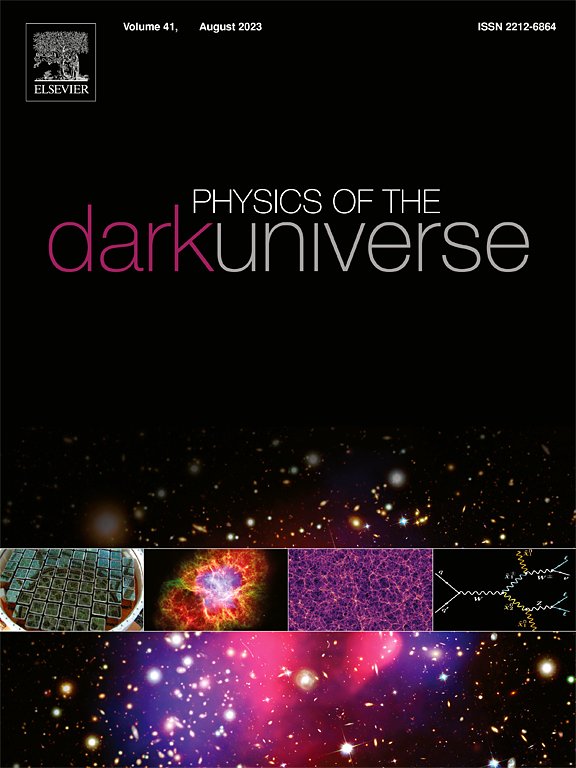等离子体中类rn黑洞的阴影和弱引力透镜效应
IF 5
2区 物理与天体物理
Q1 ASTRONOMY & ASTROPHYSICS
引用次数: 0
摘要
本文研究了一个Reissner-Nordström-like(类rn)黑洞(BH)在Kalb-Ramond (KR)引力中的弱引力透镜效应和阴影半径。研究在三个不同的框架下进行:均匀等离子体,奇异等温球(SIS)和非奇异等温球(NSIS)。当一个有重力的物体被等离子体包围时,透镜角度由电磁波的频率、等离子体色散、等离子体的不均匀性和重力决定。即使在均匀等离子体中,由于二次效应,引力光子的偏转角度也与真空中的不同,并取决于光子的频率。我们考虑了这两种效应,并计算了存在KR重力时明显不均匀等离子体的透镜角。利用Sgr A*事件视界望远镜(EHT)项目的观测数据,得到了类rn黑洞参数Q和l对应的观测范围,以及当违反洛伦兹参数l增大时,黑洞阴影半径减小。为了与观测数据联系起来,我们检查了透镜产生的图像的放大倍率和定位,以及位于不同星系附近的光源的弱偏转角和放大倍率。本文章由计算机程序翻译,如有差异,请以英文原文为准。
Shadow and weak gravitational lensing of RN-like BH in plasma
In this paper, we investigate weak gravitational lensing and shadow radius in the Kalb–Ramond (KR) gravity for an Reissner–Nordström-like (RN-like) black hole (BH). The examination is carried out in three distinct frameworks: uniform plasma, singular isothermal sphere(SIS), and non-singular isothermal sphere (NSIS). When a gravitating object is surrounded by plasma, the lensing angle is determined by the frequency of the electromagnetic wave, plasma dispersion, plasma inhomogeneity, and gravity. Even in uniform plasma, the gravitational photon deflection angle differs from that in a vacuum and depends on photon frequency due to the second effect. We consider both effects and calculate the lensing angle for a significantly non-uniform plasma in the existence of KR gravity. Utilizing observational data from the Event Horizon Telescope (EHT) project for Sgr A*, we have obtained that which range of RN-like black hole’s parameters and correspond observations as well as when the Lorentz-violating parameter rise, radius of black hole shadow decrease. To connect a relationship with observations data, we examine the magnification and positioning of images produced by lensing, as well as the weak deflection angle and magnification for sources located near various galaxies.
求助全文
通过发布文献求助,成功后即可免费获取论文全文。
去求助
来源期刊

Physics of the Dark Universe
ASTRONOMY & ASTROPHYSICS-
CiteScore
9.60
自引率
7.30%
发文量
118
审稿时长
61 days
期刊介绍:
Physics of the Dark Universe is an innovative online-only journal that offers rapid publication of peer-reviewed, original research articles considered of high scientific impact.
The journal is focused on the understanding of Dark Matter, Dark Energy, Early Universe, gravitational waves and neutrinos, covering all theoretical, experimental and phenomenological aspects.
 求助内容:
求助内容: 应助结果提醒方式:
应助结果提醒方式:


